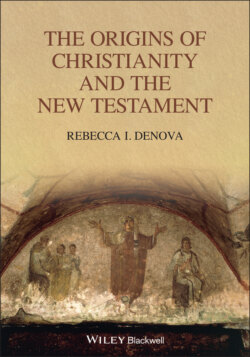Читать книгу The Origins of Christianity and the New Testament - Rebecca I. Denova - Страница 23
Old Testament/Jewish Scriptures Canon
ОглавлениеYou will often see the texts of the Bible referred to as the “canon” of Jewish texts and the gospels as the “canonical gospels.” In Greek, “canon” was a system of measurement. Applied in this sense “canon” refers to those books that were “measured” in later decisions taken to determine which books would be listed as “Sacred Scriptures.” The Jewish books (the first half of the Bible) were canonized c. 200 ce under the auspices of a Rabbi known as Judah the Prince. The documents that became the New Testament, the gospels, and the letters of Paul took several centuries to reach agreement on the “canon,” and only began to be considered in a formal list under Constantine (c. 325 ce).
The designation “Old Testament” is a familiar one for the Jewish books. However, it is a Christian invention that is derogatory in nature. “Testament” is a later word for the older term of “covenant.” “Covenant” simply meant a “contract” between you and your people and your god(s). Christians in the second century began claiming that the older “covenant” with Israel was no longer valid and was replaced by the “new covenant” through Jesus. This idea is known today as “supersessionism” (“superseded” by Christianity, and still resonates as an element of modern anti-Semitism).
Naming the older books the “Old Testament” implies a judgment call. For Jews, these texts are not “old” in the sense that they are no longer valid. They remain at the center of Jewish belief and life. This textbook will use the term, “Jewish Scriptures” or “the Scriptures,” when referring to the various books of this collection. Some texts refer to the New Testament as the “Christian Scriptures,” but “New Testament” is the earlier descriptor. In the first century when Christian texts referred to “the Scriptures,” it was the Jewish Scriptures that they had in mind.
Mark, Matthew, Luke, and John are consistently designated the “canonical gospels.” This is out of place, as there was no concept of “canon” for these gospels in the first century. Between the first and third centuries there were dozens of other gospels that narrated different details and different interpretations of the teachings of Jesus. In the second century, the Church Fathers began a process of declaring which of these gospels contained “correct belief” (orthodoxy) and which were “heretical” (from the Greek haíresis, “a school of thought”). The term “canonical gospels” is relative to the later decision that included only these four gospels in the New Testament.
